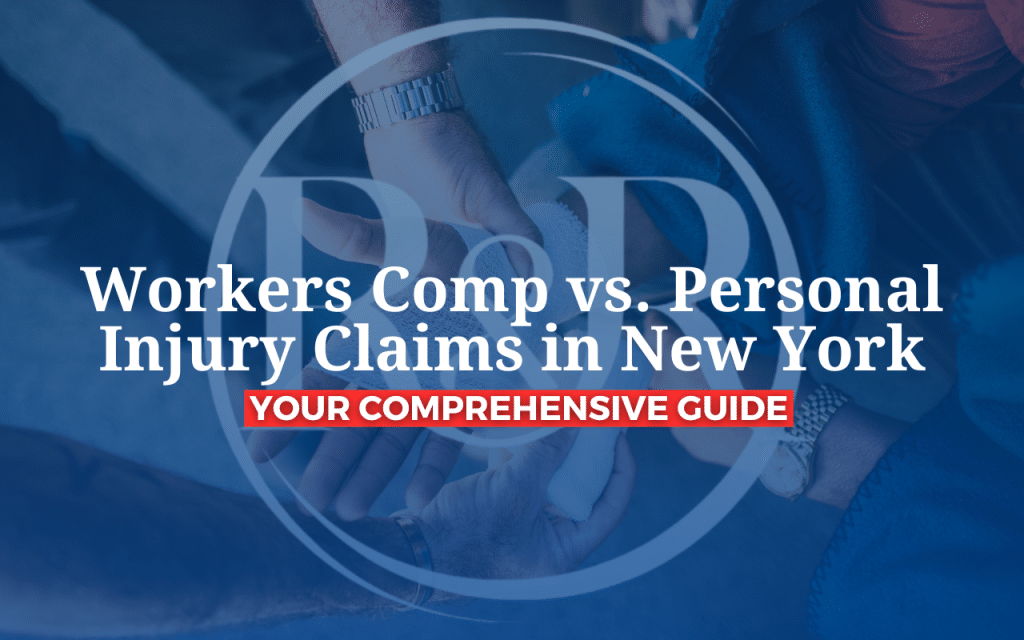Navigating the complexities of personal injury settlements can be challenging, particularly when it comes to understanding the potential tax implications. At Rosenberg & Rodriguez, we aim to provide our clients with clear and concise information to help them make informed decisions. This blog will explore how personal injury settlements are taxed in New York, breaking down the various components of a settlement and their corresponding tax treatments.
Understanding Personal Injury Settlements
A personal injury settlement is a compensation agreement reached between an injured party (the plaintiff) and the party responsible for the injury (the defendant). This settlement compensates the injured party for damages incurred due to the incident, which may include medical expenses, lost wages, pain and suffering, and other related costs.
Components of a Personal Injury Settlement
Personal injury settlements typically consist of several components, each addressing different aspects of the damages suffered. These components include:
- Compensatory Damages: Designed to compensate the plaintiff for actual losses, such as medical expenses, lost wages, and property damage.
- General Damages: Intended to compensate for non-monetary losses, such as pain and suffering, emotional distress, and loss of enjoyment of life.
- Punitive Damages: Awarded in cases where the defendant’s conduct was particularly egregious or reckless, serving as a punishment and deterrent.
Taxability of Personal Injury Settlements in New York
The tax treatment of personal injury settlements in New York depends on the nature of the damages awarded. The Internal Revenue Service (IRS) and New York State Department of Taxation and Finance have specific guidelines on which components of a settlement are taxable and which are not.
Tax-Exempt Components
Medical Expenses:
- Compensation for Medical Expenses: Amounts received to cover medical expenses resulting from a personal injury are generally not taxable. This includes reimbursement for hospital bills, doctor visits, surgeries, medications, and other related costs. The rationale behind this exemption is that these payments aim to restore the injured party to their pre-injury state, not to provide a financial windfall.
Pain and Suffering:
- Physical Pain and Suffering: Compensation for physical pain and suffering resulting from a personal injury is typically not taxable. This includes damages for physical discomfort, chronic pain, and other physical ailments caused by the injury.
- Mental Anguish Related to Physical Injury: If the mental anguish or emotional distress is directly linked to a physical injury, the compensation for these damages is also not taxable. For example, if an individual suffers from anxiety or depression as a result of a physical injury, the damages awarded for this emotional distress are generally tax-exempt.
Taxable Components
- Lost Wages: Amounts received as compensation for lost wages are considered taxable income. This is because lost wages represent income that the plaintiff would have earned had they not been injured, and therefore, it is subject to income tax. Both federal and state income taxes apply to this portion of the settlement.
- Punitive Damages: Unlike compensatory and general damages, punitive damages are always taxable. The purpose of punitive damages is to punish the defendant and deter similar conduct in the future, rather than to compensate the plaintiff for actual losses. As a result, these damages are considered taxable income.
- Interest on Settlement: Any interest earned on the settlement amount before it is paid out to the plaintiff is taxable. This includes interest accrued during the settlement negotiation period or while the settlement funds are held in an escrow account.
Reporting and Paying Taxes on Personal Injury Settlements
Understanding how to report and pay taxes on personal injury settlements is crucial to avoid potential issues with the IRS or the New York State Department of Taxation and Finance. Here are some important steps to follow:
Reporting Settlement Amounts
- Federal Tax Reporting: Form 1040: Plaintiffs must report taxable portions of their personal injury settlement on their federal income tax return using Form 1040. The taxable components, such as lost wages, punitive damages, and interest, should be included in the appropriate sections of the form.
- State Tax Reporting: New York State Income Tax Return: Plaintiffs must also report taxable portions of their settlement on their New York State income tax return. The income from the settlement should be included in the income section of the state tax return.
Paying Taxes on Settlement Amounts
Withholding and Estimated Payments:
- Withholding: In some cases, the defendant or insurance company may withhold a portion of the settlement amount to cover taxes. This is more common for large settlements and may help plaintiffs avoid underpayment penalties.
- Estimated Tax Payments: Plaintiffs who receive substantial taxable settlement amounts may need to make estimated tax payments throughout the year to avoid penalties for underpayment. These payments can be made using Form 1040-ES for federal taxes and Form IT-2105 for New York State taxes.
Seek Professional Advice:
- Consult a Tax Professional: Given the complexities of tax laws and the potential for significant financial implications, plaintiffs should consider consulting a tax professional. A tax advisor can provide personalized guidance on reporting and paying taxes, ensuring compliance with federal and state tax regulations.
Maximizing Your Personal Injury Settlement
To maximize the benefits of a personal injury settlement and minimize tax liabilities, plaintiffs should consider the following strategies:
- Structured Settlements: Spread Payments Over Time: Structured settlements allow plaintiffs to receive their settlement amount in periodic payments over time, rather than a lump sum. This can help manage tax liabilities by spreading taxable income across multiple years, potentially reducing the overall tax burden.
- Allocation of Damages: Specify Damages in Settlement Agreement: Clearly specifying the allocation of damages in the settlement agreement can help ensure that non-taxable components, such as medical expenses and physical pain and suffering, are accurately identified. This can prevent unnecessary taxation on non-taxable amounts.
- Investment Planning: Invest Settlement Proceeds Wisely: Proper investment planning can help plaintiffs preserve and grow their settlement proceeds. Working with a financial advisor can provide valuable insights into investment strategies that align with the plaintiff’s financial goals and risk tolerance.
Contact Our New York Personal Injury Lawyers Now
Understanding the tax implications of personal injury settlements is essential for maximizing the benefits of the compensation received. By being aware of the taxable and non-taxable components of a settlement, plaintiffs can make informed decisions and effectively manage their tax liabilities.
At Rosenberg & Rodriguez, we are committed to providing our clients with comprehensive legal and financial guidance throughout the personal injury settlement process. If you have any questions or need assistance with your personal injury case, please do not hesitate to contact us.




